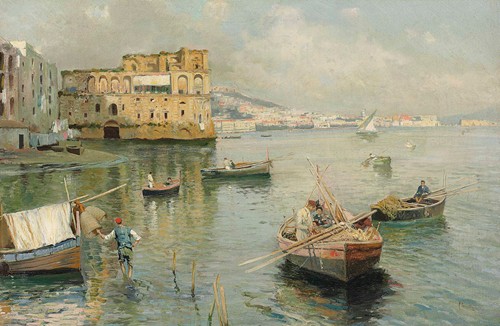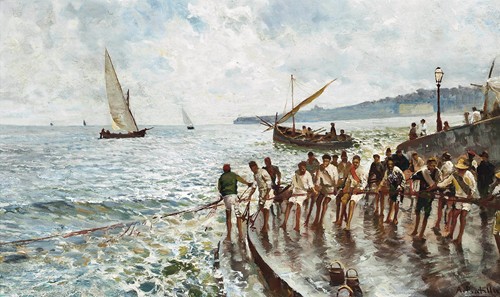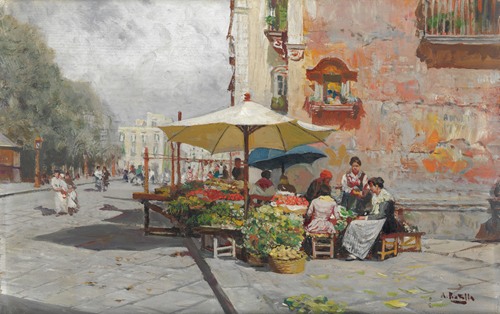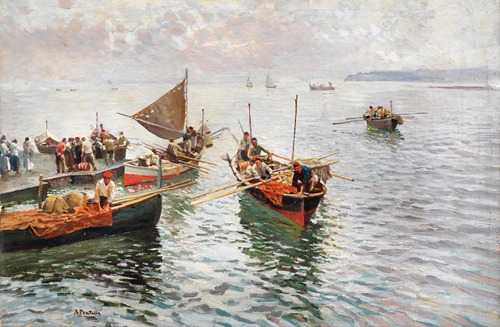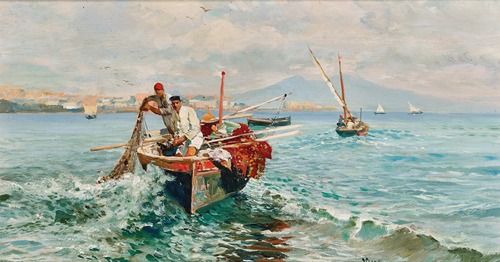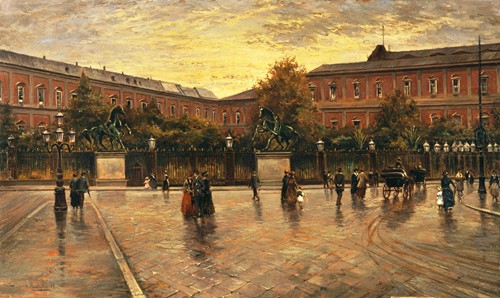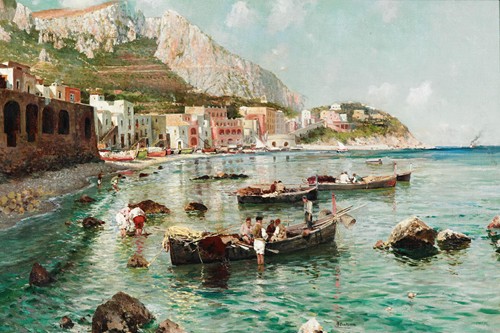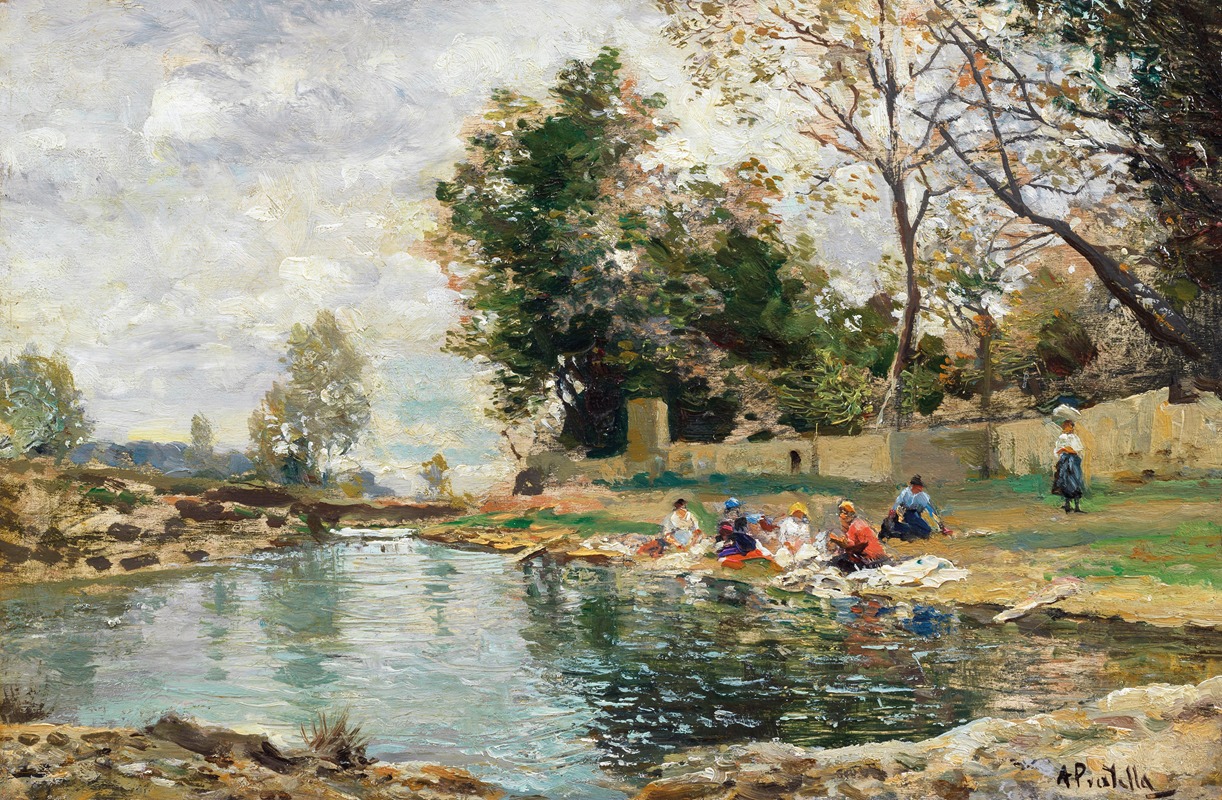
Attilio Pratella was an Italian painter, noted for his landscapes and realistic scenes of Neapolitan life.
Pratella grew up in Lugo di Romagna, to parents Alessandro Pratelli and Giuseppa Verlicchi (changing his surname to Pratella in 1876). At an early age he was known for his talent and hard work; staying after class alone to work on his painting. At 16, he illustrated a surgery book for a doctor from Bologna.
He attended the Trisi College, studying with painter Ippolito Bonaveri. From 1877-78, he studied on scholarship at the Accademia di Belle Arti di Bologna.
On winning a Campagnoli scholarship in 1880 at age 24, he moved to Naples to study at the Accademia di Belle Arti di Napoli. To support himself during this period, he painted popular tourist sketches for the workshop of Masto Peppe (Giuseppe Massa). He also executed ceramic decorations for the Cesare Cacciapuoti workshop, creating imitations of Capodimonte porcelain, collaborating with antiques dealer Charles Varelli.
In 1887 he married Annunziata Belmonte, moving with her to the Vomero neighborhood of Naples in the early 1920s, at first to Via Luca Giordano. Together the Pratellas had five children: Fausto (1888-1964), Ugo (1890-1978), Paolo (1892-1980), Eva (1897-1996) and Ada (1901-1929). Their sons Fausto and Paolo, and his daughter Ada also became painters. The area where they lived in Vomero gradually became an artist colony, where his friend and artist Giuseppe Casciaro lived nearby. He would ultimately spend the remainder of his life in Naples.
Pratella died in 1949, at his home on Piazetta Aniello Falcone, near Villa Floridiana in the Vomero neighborhood of Naples. Subsequently a street in Naples and Lugo di Romagna were named in his honor.
